Nat has booked us a well deserved weekend away from the city rat race in the hinterland north of Brisbane as part of my birthday gift. This means a weekend away from the kitchen and the endless washing up I seem to create.
Nat adores the Rye and Caraway loaf from the Bourke Street Bakery cookbook. So I have baked it for her/us so we may take it away with us for picnicking and the like.
While in Sydney earlier this year we found the bakery on Bourke St on the rainiest, windiest, coldest, most miserable day imaginable. It is tiny, really tiny. This particular day all the seating was taken, leaving us standing outside huddled under an umbrella with no room for coffee or a yummy tart. I was already holding a bag full of bread from other bakery visits (Sonoma and Iggy’s Bread of the world) so I had no room for further, so alas I have never tasted the original that this bread is based on.

Desem to batter
As we are away, I refreshed my desem starter a day ago for another week in the fridge and used the discard to build a 100% hydration white flour starter which the formula calls for. Two feeds later the starter was bubbling, active and ready for use.
With my rye grain supplies sorely depleted I chose to use quinoa as the alternative grain soaker mentioned in the formula. The morning before mixing I soaked the quinoa in an equal weight of water.
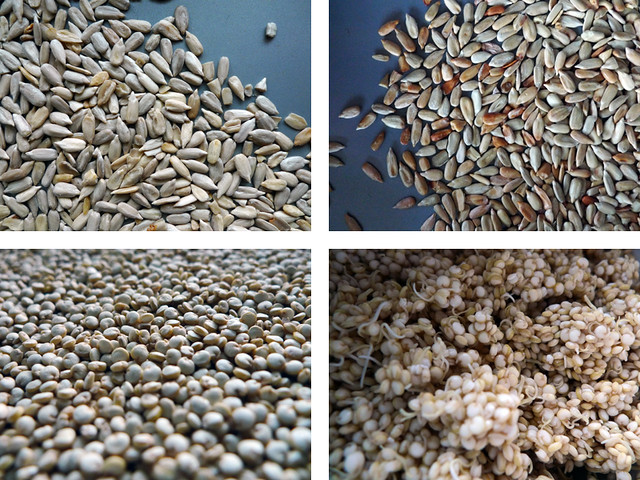
Toasted seeds and sprouting quinoa
… Surprise …When I arrived home the quinoa had sprouted. I had no idea this was going to happen and it brought a rather big smile to my face.
I won’t publish the formula (for copyright reasons) as I didn't deviate from the original apart from using freshly milled whole wheat for 20% of the total flour. Lets just say it’s a sourdough at around 60%-65% hydration with a large proportion of liquid starter. It has aromatic additions of caraway seeds, cumin seeds, toasted sunflower seeds, rye starter and in my case sprouted quinoa grains.

caraway seeds, cumin seeds, toasted sunflower seeds and sprouted quinoa grains
It has been a while since I have had to knead dough at this hydration level. On a hot and humid Brisbane night, it was a 20min workout….but the work pays off for a beautiful silky dough leading to a soft crumb after baking. I cut the bulk ferment short by half an hour and gave the dough a nice long bench rest so shaping would be relaxed and agreeable.
Into the fridge straight away for a nine hour proof.
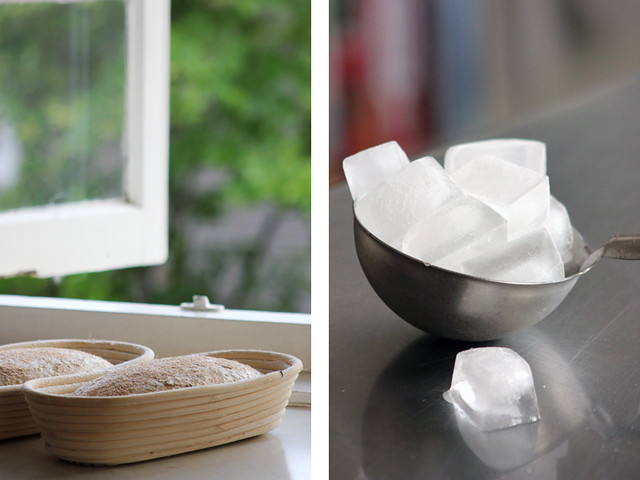
Waiting to load and steam

Upturned
One loaf will travel away with us for the weekend, while the other has come to work with me….half of it is gone already with lots of happy work colleagues.
Crumb is soft , aromatic and savoury…I heard someone sniffing all the way down our corridor at work before arriving in our room with a smile.

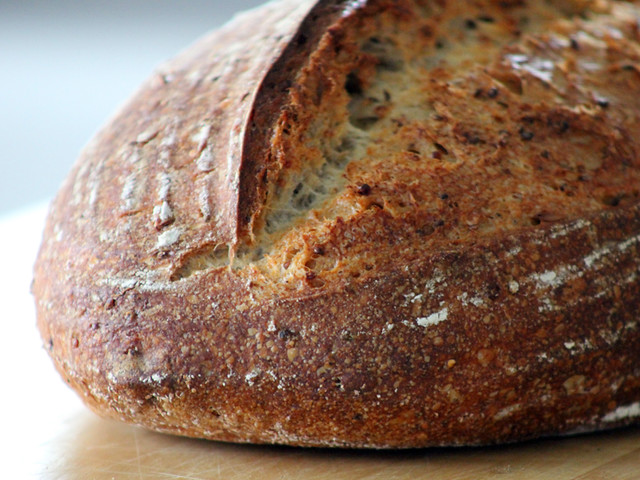
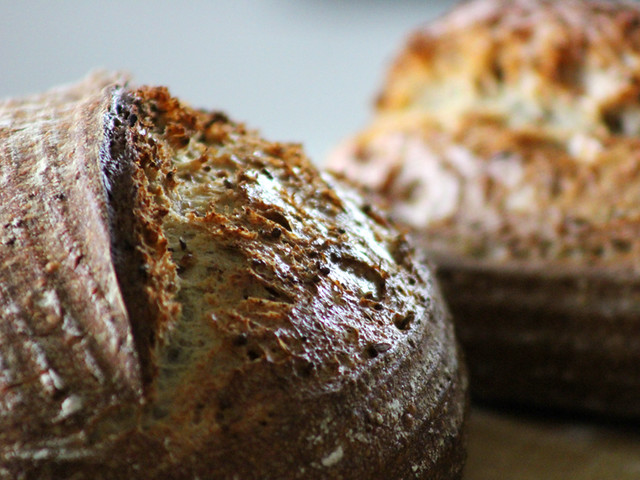
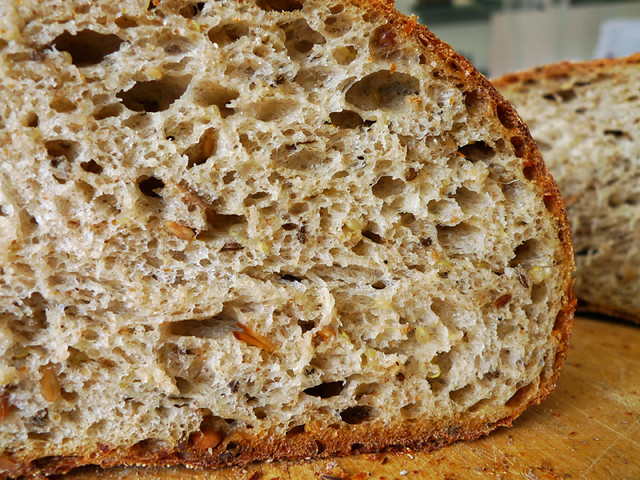
Best wishes to everyone spending time in their kitchens this weekend … See you all next week.
Cheers, Phil